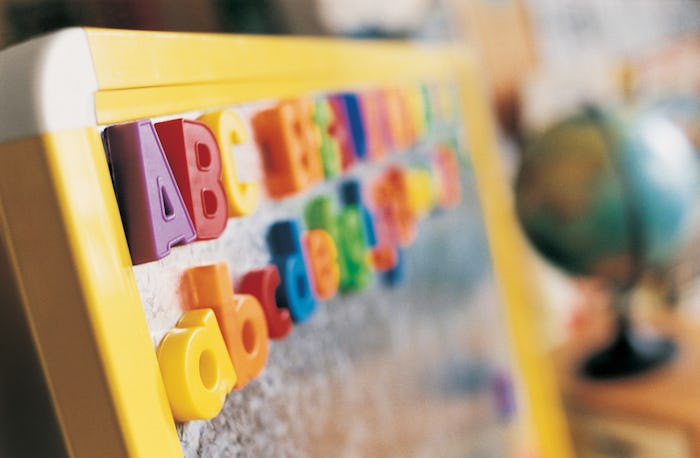Life

Here's What You Need To Do If Your Child's School Or Care Center Has A COVID-19 Case
As summer draws to a close, schools and care centers across the United States are making a difficult decision — should kids return to school physically or do virtual learning? There are so many questions, but a lot of parents' biggest worry is what will happen if your child's school or care center reports a COVID-19 outbreak. Whether it's your child that tests positive or not, knowing what to do in this situation can alleviate a lot of anxieties and fear.
Pediatrician Daniel Ganjian tells Romper if you find out your child’s school had a positive case, it’s important to find out as much information as possible. “For example, was the [infected] child in your child's class? Are other classmates and teachers exhibiting symptoms? Do they share a playground or classroom with each other?" He says you should then talk to your pediatrician to get your child tested if they were in direct contact with the positive person. Dr. William Li tells Romper it's also in your best interest for the entire family to be tested if your child was in direct contact with the infected person.
But if you want to be extra safe, Dr. Robert Quigley tells Romper that because the coronavirus has been shown to spread quickly, it’s best to just assume your child has come in contact with the virus and get them tested in response to being notified of a positive case at the school. “As you await the test results, it is best to keep the possibly infected person away from the other household members as much as possible, ideally in a separate room to avoid potential further spread of the virus,” he says.
So how would that work with a younger child? Quigley says, “It’s important to follow strict sanitary measures when interacting with a possibly infected child, as age impacts the level of risk for COVID. If caring for children who cannot quarantine alone, make sure to reduce your risk of infection by frequently disinfecting surfaces the child touches, wearing a mask when around them, and washing hands immediately after interaction with them.”
Li says, “The most important thing is to communicate with the teacher or administrator to understand the protocol and next steps that the school or care center plan to take. With this information, you can determine whether it is safe for your child to return to school.”
If it’s your child who is infected, Ganjian says, “Almost all kids recover from COVID-19. There are rare exceptions, but there are rare exceptions with the recovery from all viruses, including the rhinovirus — your common cold virus.”
Li says that recent studies have shown that children older than 10 can spread the virus just like adults can. But it’s rare that younger children develop a severe life-threatening condition called multisystem inflammatory syndrome.
“While data shows that adults have made up 95% of reported COVID-19 cases, we know that children of all ages can still be infected and become ill from the virus,” Quigley says. “With that said, and from what little we know about this novel virus, it’s often that children and adolescents under the age of 18 are less likely to be infected by COVID-19, and when they are, do not become as sick as adults.”
“However, if the child or adolescent has an underlying medical condition, they are at a higher risk of being infected and having serious illness resulting from the virus,” Quigley says. “In general, for all age categories, it is of the utmost importance to continue to practice preventative measures.”
Ganjian says measures should include the school enforcing good hand hygiene — like washing hands before eating, before and after touching your face — and taking a shower and changing clothes when the child comes home. Li says that in order for schools to reduce the risk of an outbreak, they should make masks 100% mandatory for all faculty, staff, and students, design classroom seating and traffic flow in hallways to allow 6 feet of social distancing — including reorganizing the cafeteria seating — have two nurses' offices — one for regular situations and one for students who are suspected of having COVID-19 — and know where to refer students for testing if they need it.
Experts:
Dr. Daniel Ganjian, MD, pediatrician at Providence Saint John’s Health Center in Santa Monica, California.
Dr. Willam Li, renowned physician scientist and Angiogenesis Foundation President
Dr. Robert Quigley, senior vice president and regional medical director for International SOS, a leading medical and security services company